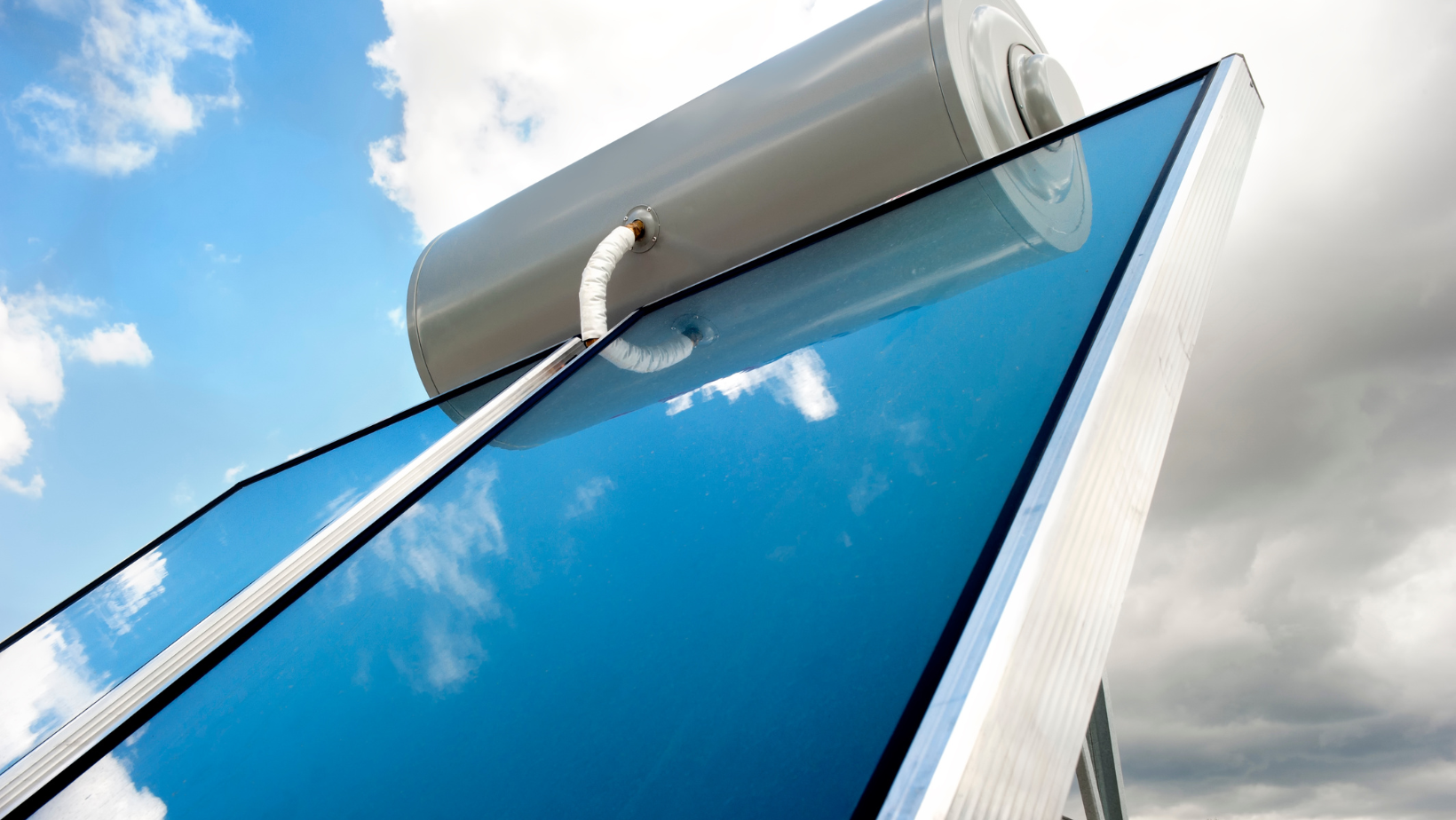· home clean energy credit · 5 min read
Are Solar Water Heaters a thing now?
Step into the world of solar water heaters, where we guide you through the benefits and considerations of this sustainable home solution.

With the Inflation Reduction Act of 2022 shining a spotlight on renewable energy solutions, solar water heaters are emerging as a popular choice for homeowners. Thanks to the Residential Clean Energy Credit (tax code 25D), you can now avail a 30% tax credit on the cost of equipment and installation. This makes solar water heaters a cost-effective and eco-friendly option for your home. In this guide, we will delve into the different types of solar water heaters, how they work, and the benefits they bring.
How exactly do Solar Water Heaters Work
Solar water heaters tap into the abundant solar energy to heat water for various household needs. These systems comprise solar collectors that absorb the sun’s energy and storage tanks for the heated water. Installed on rooftops to maximize sunlight exposure, solar water heaters can provide hot water for bathing, dishwashing, laundry, and more. As per the U.S. Department of Energy, a solar water heater can reduce your water heating costs by 50% to 80%.
How do I use the Solar Water Heater Efficiency Metrics
When evaluating solar water heaters, two key metrics to consider are the Solar Fraction (SF) and the Solar Energy Factor (SEF).
Solar Fraction (SF): SF is the portion of the total conventional hot water heating load (delivered energy and tank standby losses). A higher SF indicates a greater solar contribution to water heating, reducing the energy required by the backup water heater. The SF varies from 0 to 1.0.
Solar Energy Factor (SEF): SEF is a measure of the energy efficiency of a solar thermal water heater. It’s the energy delivered by the system divided by the electrical or gas energy input into the system. A higher SEF means a more efficient system.
Active Solar Water Heaters
Active solar water heaters come with pumps and control systems that actively circulate water or a heat-transfer fluid. There are two main types:
Direct Circulation Systems:
- How It Works: In this system, pumps circulate household water directly through the solar collectors, where it gets heated by the sun’s energy before flowing back into the home.
- Climate Suitability: These systems are best suited for regions where freezing temperatures are rare, as the water could freeze in the pipes.
- Efficiency: Generally efficient but may require a backup water heater for cloudy days or during nighttime.
Indirect Circulation Systems:
- How It Works: Instead of circulating household water, these systems use a non-freezing, heat-transfer fluid. This fluid absorbs the sun’s heat in the solar collectors and then passes through a heat exchanger, which transfers the heat to the home’s water supply.
- Climate Suitability: Ideal for colder regions where freezing temperatures are common, as the heat-transfer fluid prevents freezing.
- Efficiency: Highly efficient and often come with well-insulated storage tanks to minimize heat loss.
Passive Solar Water Heaters
Passive systems rely on natural convection rather than pumps to circulate water, making them simpler but generally less efficient. There are two main types:
Integral Collector-Storage Systems:
- How It Works: These systems combine the solar collector and water storage into a single unit. Water gets heated in the collector and is then drawn into the home when a hot water tap is opened.
- Climate Suitability: Best for areas where temperatures rarely fall below freezing.
- Efficiency: Generally less efficient than active systems but are more reliable and have fewer moving parts.
Thermosyphon Systems:
- How It Works: These systems rely on the natural convection of warm water rising to circulate water. The collector heats the water, which then rises into the storage tank, while cooler water from the tank flows back into the collector.
- Climate Suitability: Suitable for a variety of climates but may require additional insulation in colder regions.
- Efficiency: More efficient than integral collector-storage systems and have a longer lifespan due to fewer moving parts.
Understanding ROI and Savings
When it comes to investing in a solar water heater, understanding the financial implications is crucial. Here’s a breakdown of the costs and savings you can expect:
Initial Costs System Cost: The average cost of a solar water heater ranges from $2,000 to $5,000, including installation.Tax Incentives and Rebates Federal Tax Credit: The Residential Clean Energy Tax Credit covers 30% of the total system cost, significantly lowering your initial investment.
State and Local Incentives: Many states and local utilities offer additional rebates and incentives, further reducing your upfront costs.
Annual Savings Energy Bill Reduction: According to the U.S. Department of Energy, a solar water heater can reduce your water heating bills by 50% to 80%. Calculating ROI
Example: If the system costs $4,000 and you save $300 per year, the payback period would be approximately 13 years.
Property Value: Installing a solar water heater can also increase your property value, adding another layer to your ROI calculations.
For a more detailed breakdown, visit the Department of Energy’s extensive guide
Conclusion
Solar water heaters are a sustainable, cost-effective solution for meeting household hot water needs. They leverage the abundant energy of the sun, reducing reliance on conventional energy sources and contributing to a greener planet. With the Inflation Reduction Act of 2022 and the Residential Clean Energy Credit, solar water heaters have become an even more attractive option. By understanding the different types of solar water heaters, their efficiency metrics, and the factors to consider when buying, homeowners can make an informed decision that suits their needs and contributes to a sustainable future.